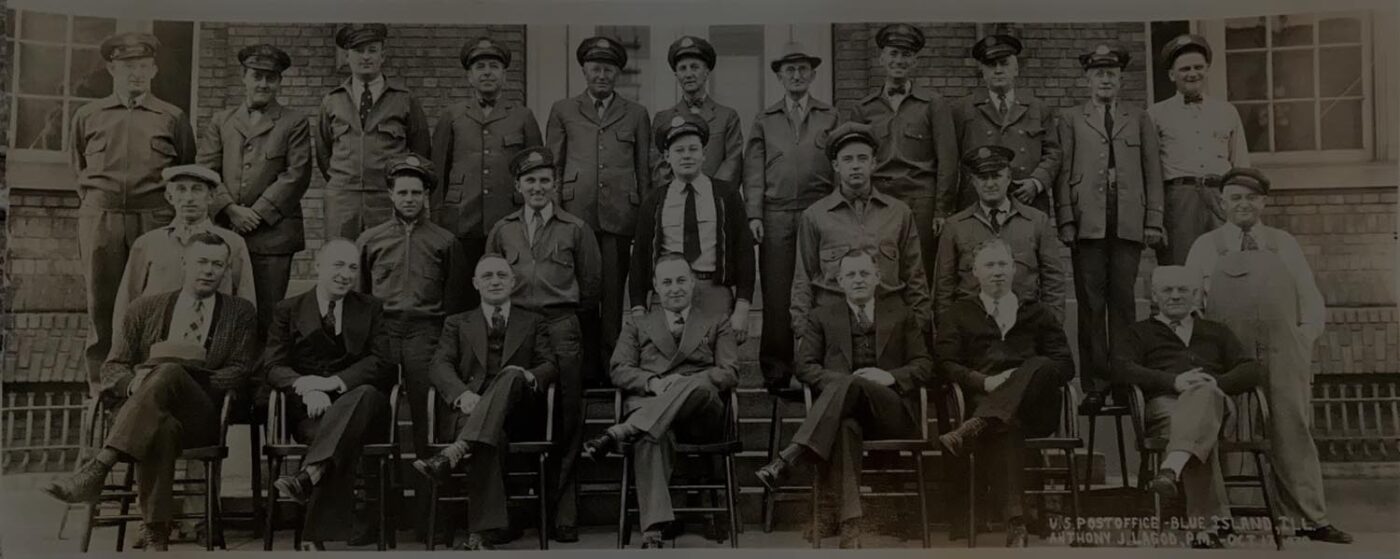From the March 4, 1900 Chicago Sunday Tribune
“Norman Rexford gave Blue Island its name. He was the first permanent settler in the suburb, and up to the time of his death, March 28, 1883, he was one of its most prominent residents.
Mr. Rexford was born in Charlotte, Vt., in 1802, and represented the fifth generation of his family in America. The year 1835 found him married and living in Pittsburgh, Pa. At that time he caught the Western Fever. He selected Chicago as the most desirable place to settle and drove with a team of horses all the way from his Pennsylvania home to this city. He first stopped at Bachelor’s Grove, Cook County, where his brother Stephen had preceded him in 1833. Shortly after he moved to Long Wood, near the north end of what is now Blue Island. Here he kept a tavern in a log cabin of four rooms. In November, 1836, Mr. Rexford moved to the site of the present village. The only building in the place was a log cabin 12×15 feet in size and without a floor. This had been built the year before by a man named Courtney.
Mr. Rexford was much taken with the location and, banking on its future, he began erecting a hewed frame building for a hotel. The structure was sided with boards drawn by team from Pine Creek, Ind., over a hundred miles away. The lumber cost $10 a thousand. The hotel stood on the east side of what is now Western Avenue, and at the top of the bluff on or near the site of the present Blue Island post office.
The migration to the West was strong in those days and Mr. Rexford’s hotel did a good business. He called it the Blue Island House. After a time the structure was enlarged. In 1858 it was destroyed by fire.
Pioneers of Chicago used to visit this old hotel frequently on festal occasions. It was customary to dance all night and eat breakfast in the morning before making the drive of twenty of thirty miles home.
In the spring the prairie roads about Blue Island often were impassable because of the swollen Calumet River and its tributary, Stony Creek. It was the custom of Mr. Rexford on such occasions to put in the upper windows of his hotel beacon lights to guide the travelers who else might lose their way in the almost impassable prairie.
Blue Island was given a post office in 1838, and Mr. Rexford was made the first postmaster. Fayette Rexford, the pioneer’s son, used to carry the mail on horseback from Chicago to Buncombe, Ill., a distance of ninety miles. He made weekly trips.
In 1852 Mr. Rexford sold his hotel and retired to a farm adjoining the village. Most of that farm is now included in Blue Island.
The suburb, which in the early days was called Portland, got its present name from its natural environment. The place is built partly on a long, narrow hill, surrounded by prairie. Looking at it from a distance the air above and beside the hill was a blue tinge. The hill looks like an island set in blue. This color effect is heightened in the spring when the Calumet River, which flows near the place, inundates the flat prairie land.
Mr. Rexford had so great a distaste for quarrels and lawsuits that he has been known to pay sums in dispute out of his own pocket after trying vainly to adjust the differences of his friends. As for himself he never engaged in litigation.
Children of Mr. Rexford now living are Fayette D. Rexford of Centralia, Ill., and Norman B. Rexford and Mrs. H.H. Massey of Blue Island.
Blue Island now has a population of 8,000.”


